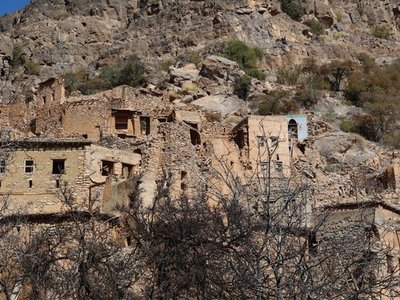Wadi Bani Habib


Wadi Bani Habib is one
of the many abandoned or semi-abandoned villages scattered all across the Hajar Mountains. It does have, however, several features that make it unique.
Sitting at over 6,000 feet (2,000 meters) of elevation, the climate in Wadi Bani Habib differs from most of
Oman
, with temperatures that can fall below zero in winter and do not go over 100 degrees Fahrenheit even in the hottest months. Rain in Wadi Bani Habib is also higher than in the rest of Oman, with yearly precipitation that usually exceeds 300 millimeters. Given these weather conditions, agriculture in this area is unique in Oman.
Wadi Bani Habib is surrounded by terraced orchards producing walnuts, apricots, and pomegranates. Some orchards are abandoned, and the large walnut trees are either dead or dying. This is especially evident deep in the wadi, on the side of the village. However, the orchards closer to the road are bright green and manicured.
The village itself is a marvel of rustic architecture. An intricate network of ragged paths branches off from the main sets of stairs carved into stone. All along these paths are abandoned houses. Where doors and windows used to be, now, there are just openings. These openings may lead to dark, dingy rooms carved into stone or roofless rooms overgrown with vegetation.
One section of the village is slightly less old and dilapidated. Here, the interior walls of some houses are decorated with floral patterns. The best-preserved structures are the mosque and a building that was used for meetings.